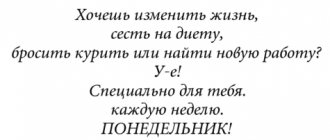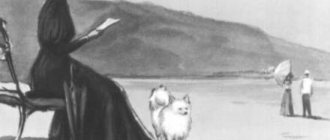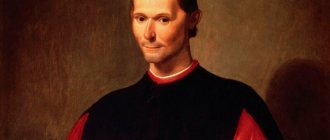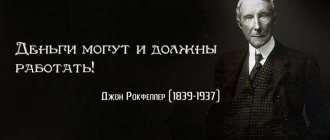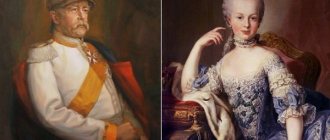Quotes on the topic "Museum"
Lesson for the future
Maria Grosholz, whom we know as Madame Tussaud, was left without a father before she was even born. He died in 1761, in a battle during the Seven Years' War, two months before the birth of his long-awaited daughter. Mother, Anna Grosholz, did not grieve for long: less than six months after her husband’s death, she began an affair with Philip Curtus, for whom she worked as an au pair. He was more than twenty years younger than her and studied a completely unusual science for that time - anatomy. Soon, Anna and her one-year-old daughter moved to Paris following Curthus, where he began to master a hitherto unknown craft: he opened a shop and began making custom-made small wax busts. Little Maria watched his work. Philip not only replaced her father, but also became her first and only mentor both in life and in work.
Maria did not receive a proper education and did not gravitate towards music and needlework, like most girls of that era. She spent long winter evenings in Curtus's workshop, little by little learning the unusual art. One day she once again hurried to Philip’s shop, but before reaching there, she unexpectedly ran into him. He grabbed the girl by the hand and dragged her to Beaune Street, where, according to him, the great Voltaire was staying. Far from political activity, seventeen-year-old Maria had little idea of whom Curthus was talking about, but she listened to him reverently: “We were very lucky that Voltaire agreed to pose. This will be your first lesson in facial modeling."
Three months later, the famous thinker died suddenly. The very next morning after his death, the wax bust was put on display in the window of Philippe's shop, and this attracted the attention of many Parisians. From that day on, their business began to go much better. Maria studied wax modeling, managed the store's budget, and searched for great deals. She took upon herself all the responsibilities for placing and lighting the figures in the gallery, and was engaged in the purchase of materials... Curtus already understood that Maria was a real treasure for him and a very worthy replacement, and he did not have to think about heirs.
Palace coups
Soon a new stage began in the life of Mademoiselle Grosholz: she was invited to Versailles to engage in the artistic education of Elizabeth, the sister of King Louis XVI. In comparison with the life that Maria had led until now, existence at court seemed easy and bright. There was no need to count every penny, run around Paris in search of the cheapest wax, or negotiate with the executioners to supply hair from the heads of those executed. But the happiness did not last long: with the beginning of the Great French Revolution, Paris overnight became the capital of chaos. The revolutionaries captured Versailles and arrested Maria, accusing her of royalism. She faced the death penalty. However, fate protected her: the new government invited the artist to make death masks from Marie Antoinette and Louis XVI, who were guillotined. The girl understood: either she would take casts of her murdered friends, or soon her head would end up in someone’s hands. She began to collaborate with the revolutionaries. With horror, she set to work again and again, and her collection was rapidly replenished with figures of the executed. “I paid for these relics by having blood on my hands. These memories will not leave me as long as I live,” said Maria.
And by chance, she ended up in the same cell with Josephine Beauharnais, the future wife of Napoleon and the Empress of France (later she will ask the artisan to create a figure of her great husband). The lessons of Curthus were not in vain: Maria persuaded Robespierre to become her model - she understood that very soon the leader of the revolution would become part of the history of France. This sculpture drew attention to Mary's work. And not only spectators, but also new customers: she managed to take casts of the faces of Danton, Desmoulins, Hebert and even Marat - though already dead. On the day of his murder, the girl was sitting in the workshop and counting the expenses for the past month. Suddenly the door opened, several authorities entered and demanded to follow them, taking everything necessary for work. The bloodied Marat was still lying in the bathtub, Maria hurriedly did her work and at the same time carefully examined his killer, Charlotte Corday, who had been detained by the guards, trying to remember as accurately as possible the features of her impartial face, so that later she could recreate her wax copy from her memories. It was then that the artist came up with an idea: not to exhibit the figures of the heroes of the tragic scene one by one, but to build a plot-based exposition. This was the first step towards creating the museum that brought her fame.
Family pride
A few years after all these events, Curtus died, and Maria inherited his business. But she started thinking about family life only when she was in her thirties. In 1795, Maria married engineer Francois Tussaud. She bore him two sons - Joseph (according to some evidence, he was named after Josephine) and Francois, and also glorified his surname throughout the world. However, there was no happy marriage: the husband turned out to be an avid gambler. Maria brought money to the family, he lost it. This more and more often led to scandals and conflicts, and there was no longer any talk of former love. Madame Tussauds endured for a long time, but there is a limit to everything. And she decided to take a desperate step - she packed her things and left her husband’s house. She decided not to pay attention to the sidelong glances of those around her, took her youngest son to her mother, and together with her eldest went on a trip to the British Isles.
The artist expanded her collection with figures of English political figures and showed it throughout Great Britain, where she quickly earned herself an impeccable reputation. The arrival of Madame Tussauds became a long-awaited event for many cities of the great monarchy. But the trials of her life were not over yet: the ship transporting exhibits to Ireland was caught in a storm. Some figures could still be saved, but most were beyond repair or drowned. However, even having lost a significant part of the collection, Madame Tussaud did not lose heart and over time recreated it from the surviving dummies. After the death of her mother, Tussaud took her youngest child and finally moved to London. She received British citizenship and founded a museum on the famous Baker Street.
With friends
Over time, being part of Madame Tussaud's collection became incredibly prestigious; the most famous people of the era became its new characters: Sir Walter Scott, Lord Byron, Admiral Nelson... Making casts and masks again and again, seventy-year-old Madame Tussaud understood that the years were taking their toll. And all she wanted now was to see her sons’ happy family life. In the end, fate rewarded Tussaud for all the suffering she had endured: her eldest son got married and soon had three children. Inspired by the proud title of grandmother, Maria began to sculpt world-famous children - princes and princesses - from wax. The most famous piece of this new collection is the figure of the future Queen Victoria, who visited the museum when she was 13 and ascended the throne 4 years later.
But already in the next season, Maria opened a “room of horrors”, for which wax copies of famous criminals were made. Having made friends with the Edinburgh executioner John Williams, Madame Tussauds again began making death masks. But now she no longer had to do everything herself: her sons were already working in her “wax empire”: Joseph became a costume specialist, and Francois managed the financial affairs of the museum.
In those days when Madame Tussaud gave excursions, she always drew the attention of visitors to the guillotine, surrounded by figures of executed Frenchmen: “By order of the leaders of the revolution, I had to make wax casts of the heads thrown into the basket by the executioner. Just cut off by this weapon.” She carefully ran her hand over one of the copies and continued: “But they are all my friends, and I would like not to part with them.” Sometimes Maria stayed at the museum overnight. What she did there when the doors were locked, no one knows. What is clear is that her creations were an integral part of her life. And even after her death in 1850, Maria did not part with them - her descendants created a figure of Madame Tussaud taking a cast of Antoinette’s severed head, and this group is still part of the exhibition.
Nowadays, Madame Tussauds Museum receives figures of the most worthy. Only one person refused to make a wax copy of herself: Mother Teresa.
*** In London, in one museum there is an inscription: “If a visitor touches the exhibits with his hands, the museum administration reserves the right to do the same with the visitor.” *** Announcement in the museum: “Bringing and viewing paintings and sculptures is strictly prohibited!” *** Over the past century, there has been a tendency to view the museum as one of the most important structure-forming elements of all modern Western culture. *** The Hermitage Museum is looking for an intelligent female bouncer who has served in the ranks of the Tretyakov Gallery. *** I will soon be sent to the museum of standards, as a standard of laziness. *** The museum is the Sunday residence of the masses. Vladislav Lorants *** A museum is a special institution in the cultural system, its subject and object. Being part of culture, it moves in line with the general trends of its development, but at the same time it influences cultural processes. *** Pensioner Petrova, on an excursion to the wax museum, complained to Stalin about her life for three hours. *** Since the second half of the 20th century. The problem of the museum becomes the subject of research for a whole range of humanities disciplines. *** Only in Russia do people enter a museum just to warm up. *** A painting in a museum hears more nonsense than anyone else in the world. Edmond Goncourt *** Another year and there will be no men, the eggs will hang out in the museum! Hundreds of women will come to look at them and hold on to them at least once!!! *** Schoolchildren are looking at an abstract painting in a museum, one says to the other: “let’s run away before they think that we painted it like that.” *** You don’t have to be perfect, everything perfect is kept in a museum. *** Just looking at the museum makes my legs give way from fatigue. Ya. Ipokhorskaya *** Your soul is like a museum of brilliant products and rare things. *** Let's go to the museum, where paintings await us and we will hold our hands by the edges, think meaningfully, and avoid the sad ones, and sprinkle with giggles, giving ourselves pleasure. *** I don't like museums. I like to just walk. Alexey Navalny *** Once Abramovich went to the art museum. He walked around the halls, looked, left and said: “Yes, it’s a bit poor here... But it’s clean!” *** Yesterday the museum of the capital show “Field of Miracles” was robbed, and there were people who were overfed. *** Museums are cemeteries of art. Alphonse de Lamartine *** Museum. Tourists: - What beautiful frescoes! Guide: - Let's go further, it's because of the dampness... *** A worker in the museum: “Bitches, people have nothing to eat, but they paint oil paintings!” *** Repentance is the most useless thing in the world. Nothing can be returned. Nothing can be fixed. Otherwise we would all be saints. Life didn't mean to make us perfect. Anyone who is perfect belongs in a museum. Erich Maria Remarque *** When your eyes are directed to the sky, the sky is reflected in them. When they look at a swamp, the swamp is reflected. Our will and choice is where to turn our eyes. Bring three friends to the museum - one will see a painting, another will see a pretty girl, and the third will see that the guard has different colored socks. *** Last Tuesday, the government of the Moscow region awarded the status of “museum-reserve” to the Muranovo estate named after F.I. Tyutcheva. This status will allow the museum to protect its lands from encroachment by developers. *** An artist should go to a museum, but only a pedant can live in a museum. George Santayana *** The museum is the last judgment of the art market. *** For the fifth time, Malevich’s “Black Square” has been stolen from the museum! And now for the fifth time the watchman Uncle Vasya manages to restore the painting by morning. *** If you think you are so unique, contact the museum and earn extra money as an exhibit! *** Museums are the only thing we have left to be proud of in our country. *** The purpose of museum activities is to develop a sense of responsibility for the preservation of wealth and artistic culture. Statuses about the museum


